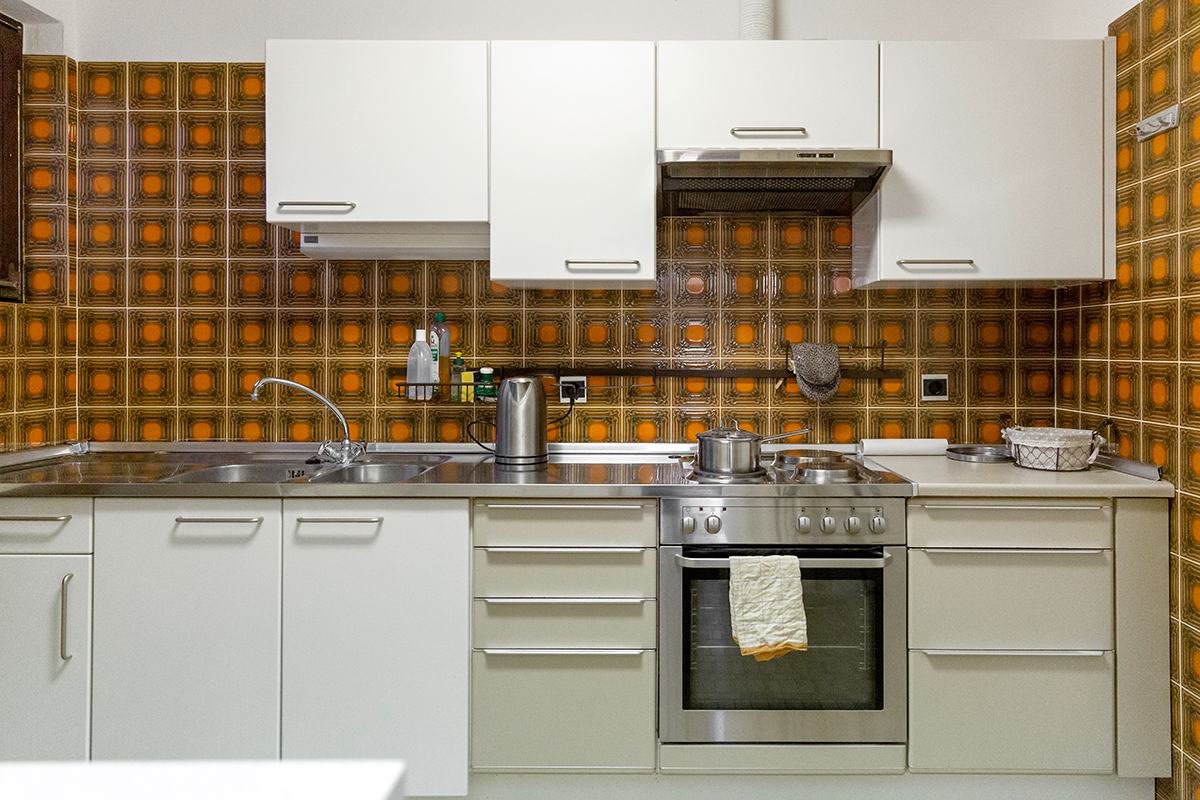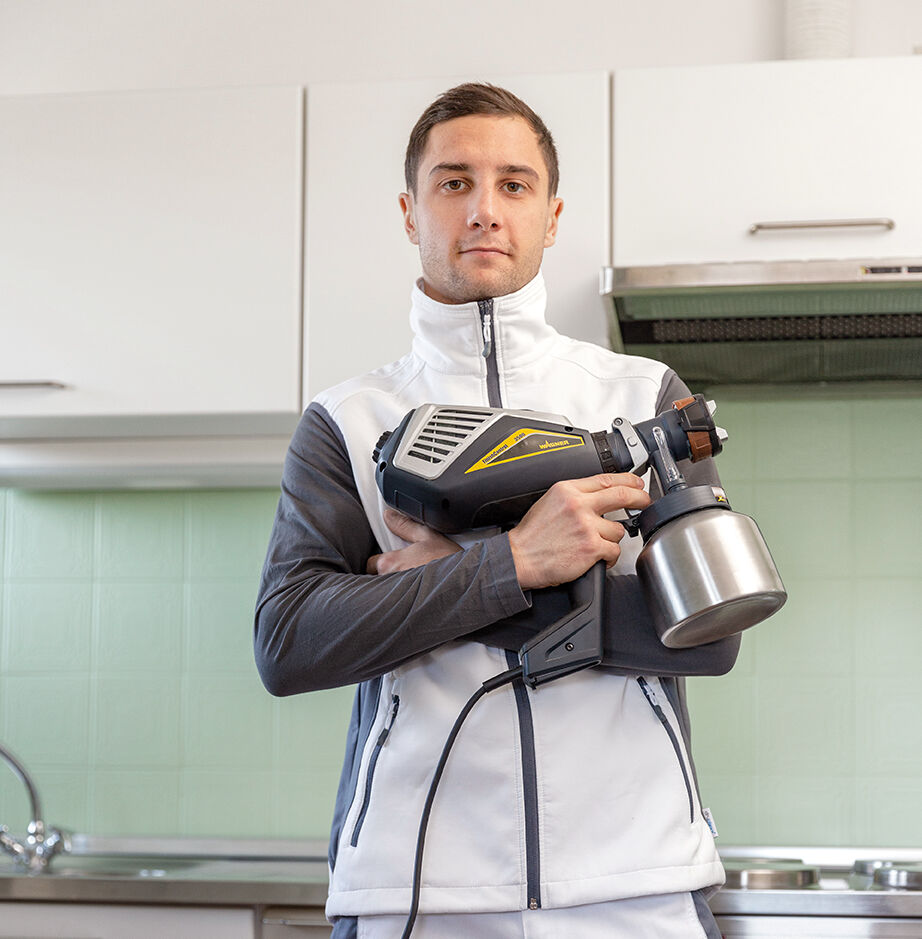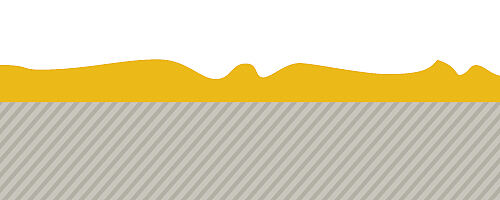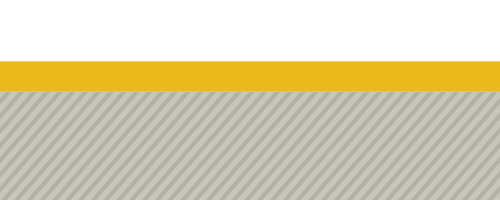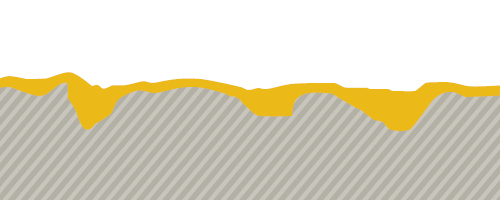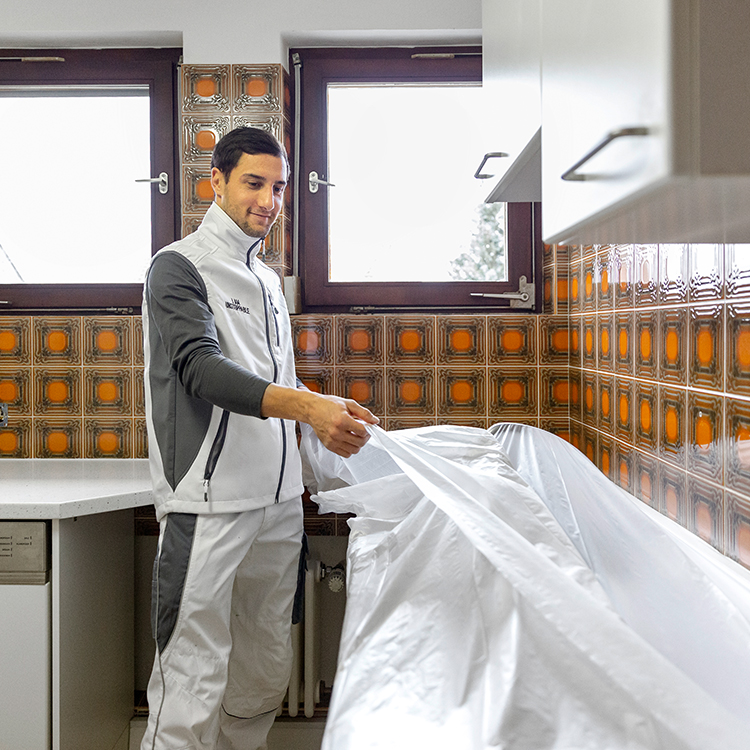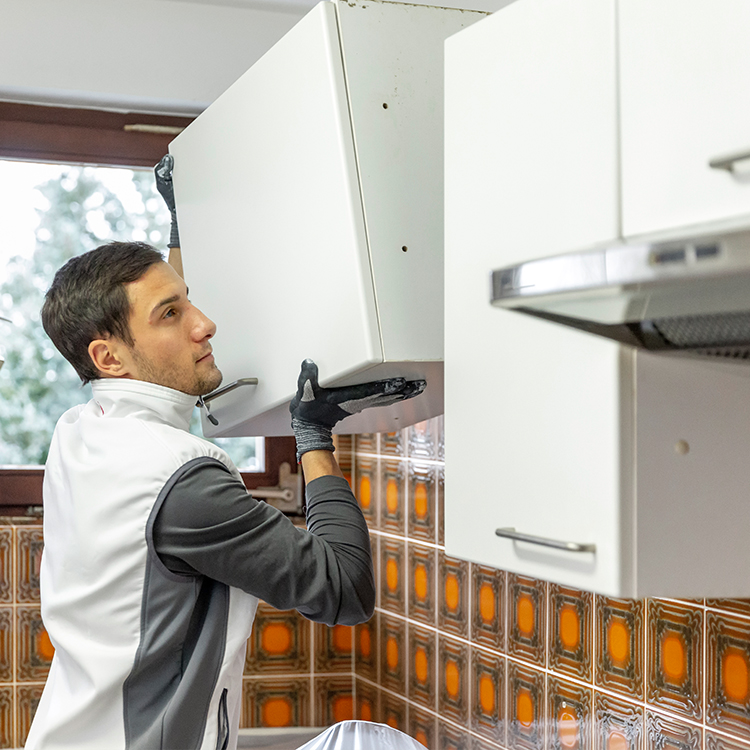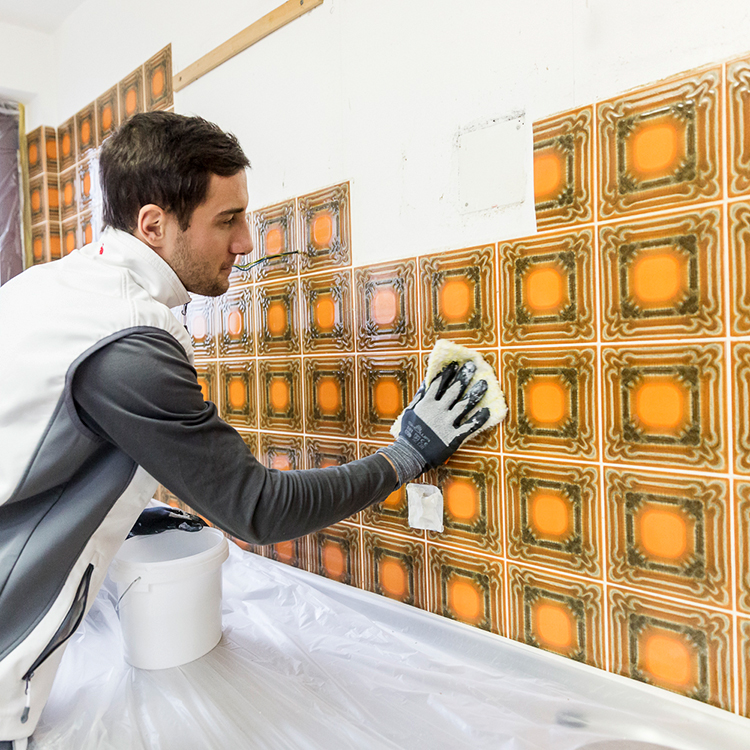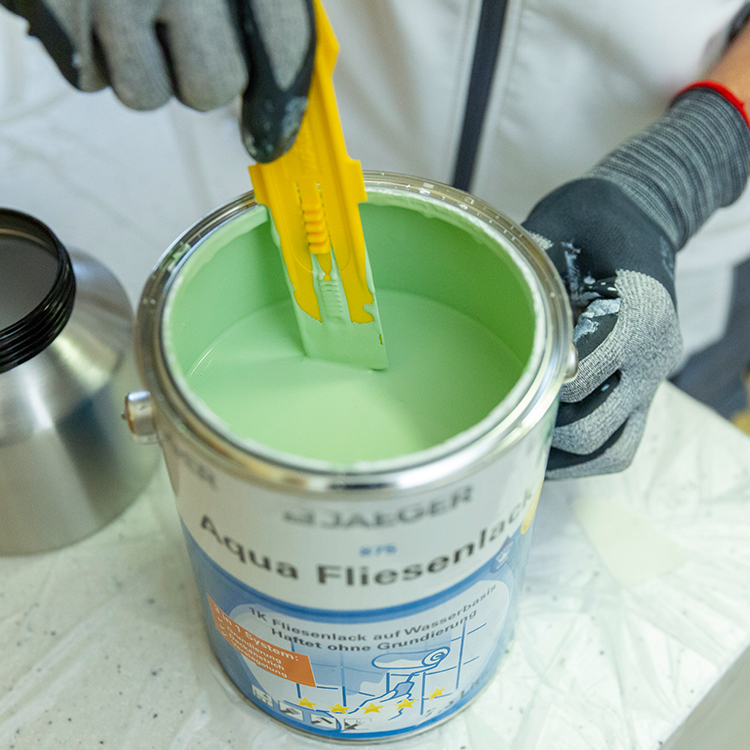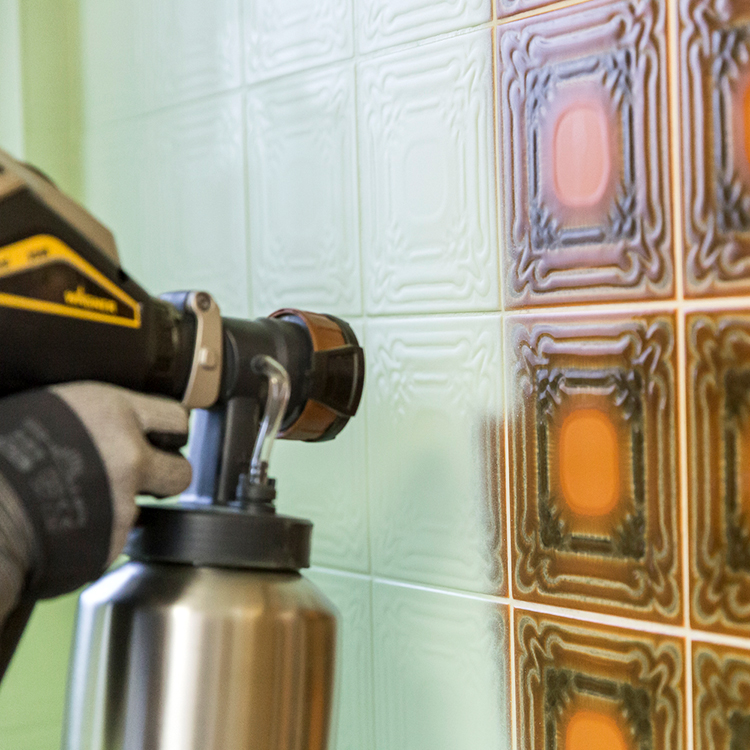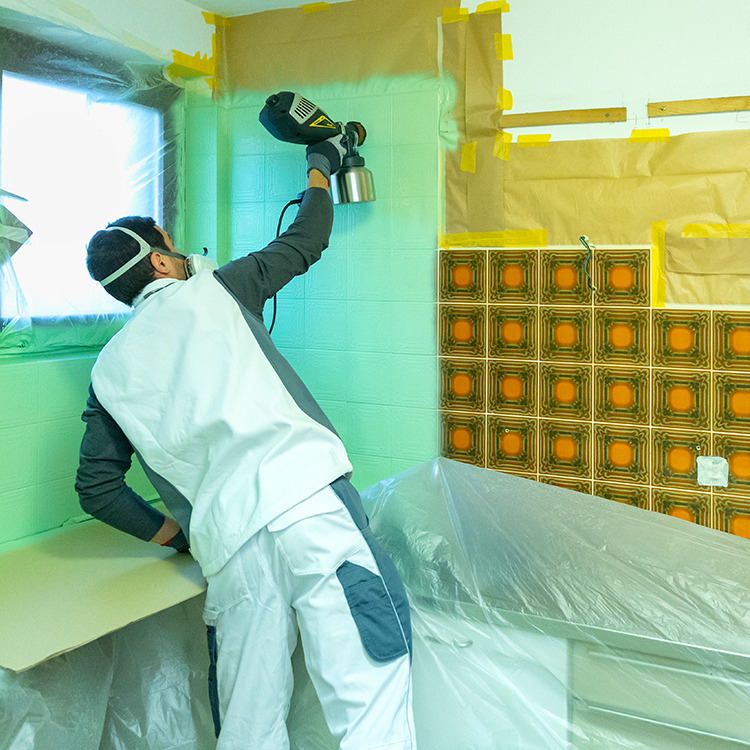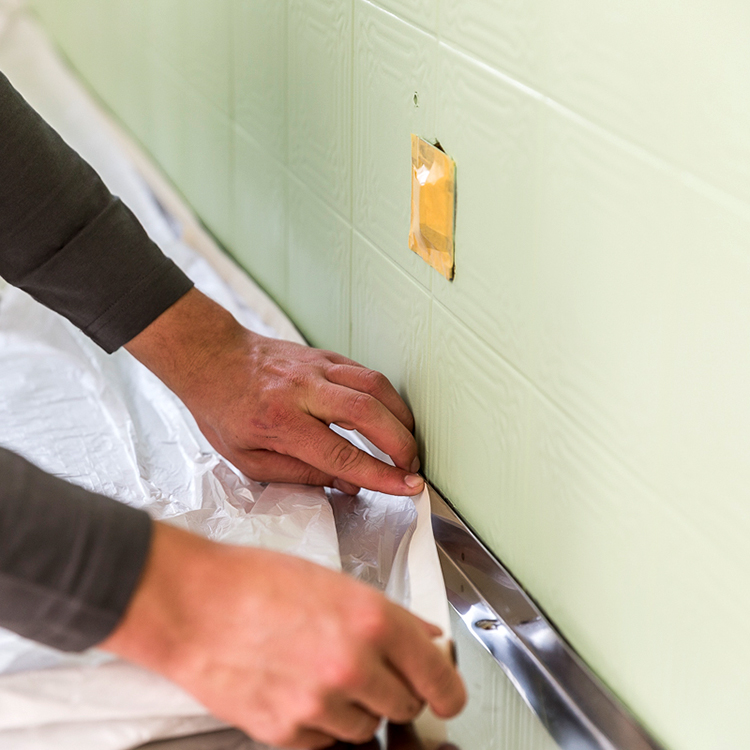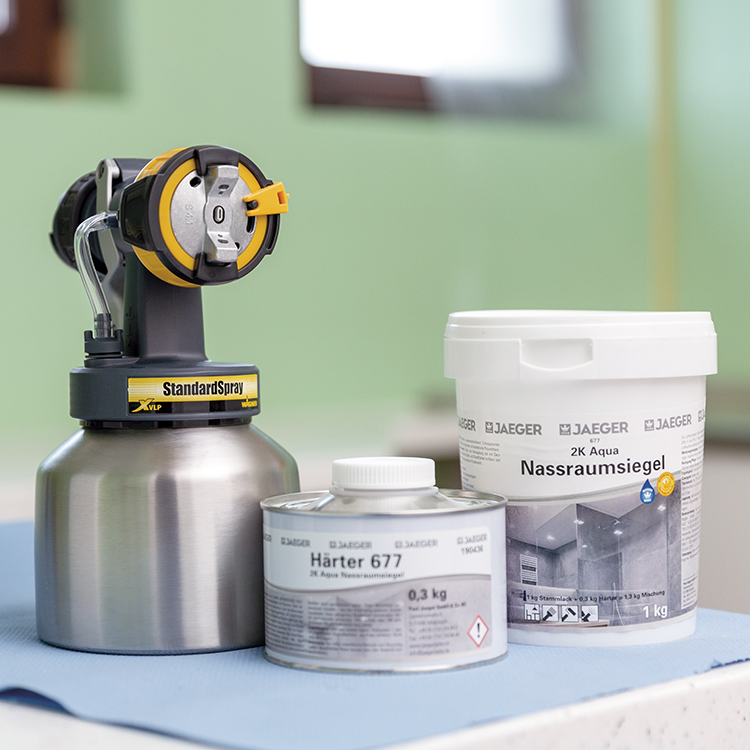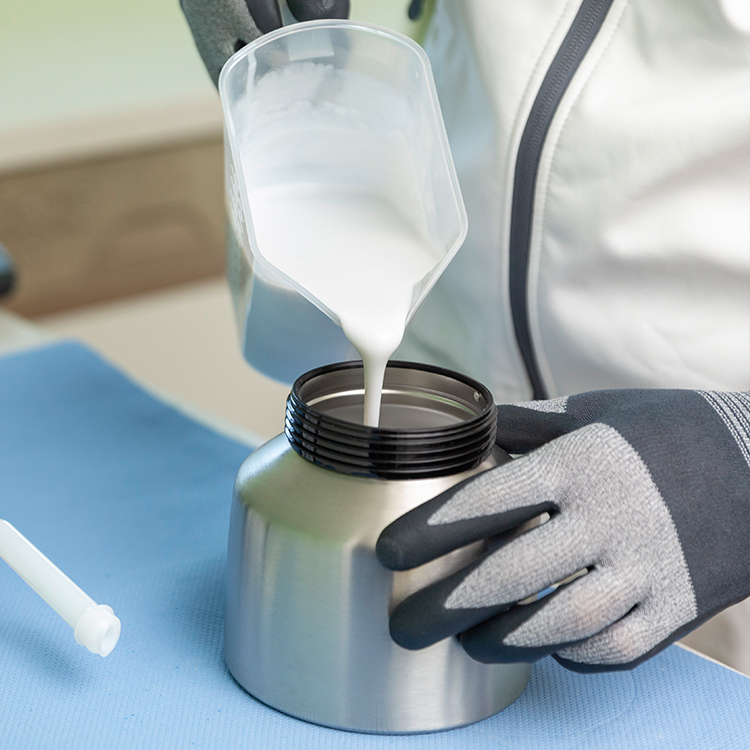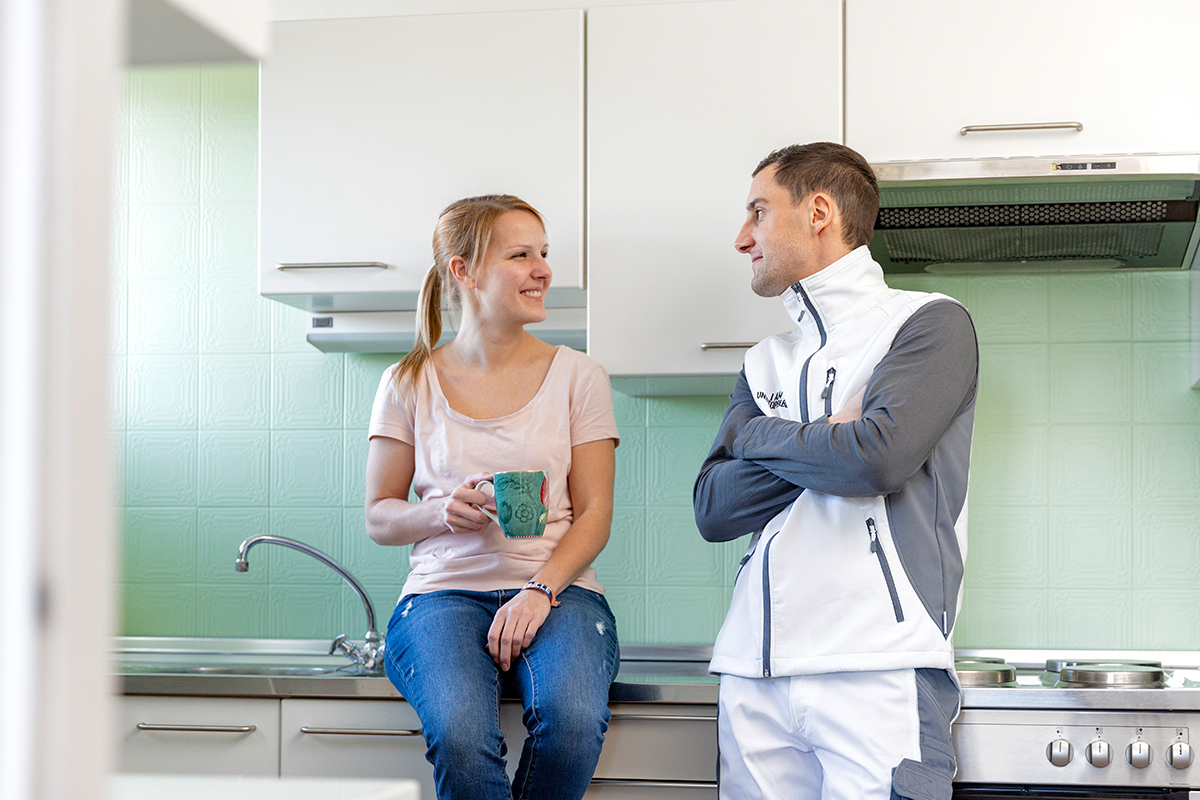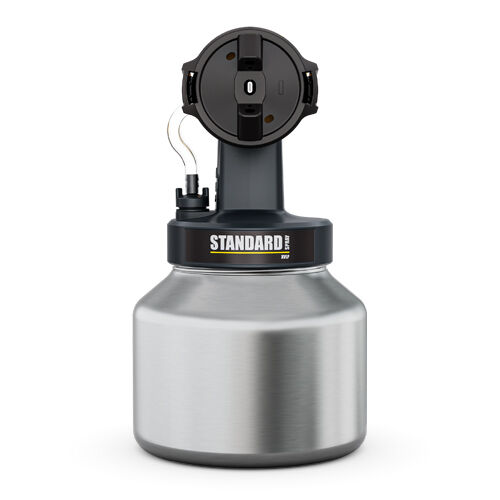Do you have customers who wants to renovate their kitchen walls without knocking off old tiles and suffering for several days from the dust? Then here is the perfect solution: simply offer to repaint the old tiles instead of replacing them. Create a new look and colour scheme in your customer's kitchen and a satisfied smile on their face. Kitchen renovation can be quick, clean and professional.
Your customer moves into their new home, an old building which needs renovating. The kitchen cabinets are still okay, but the old tiles - in brown and orange - make the room look very dark and small. Time is limited and they want to quickly make it more stylish and modern. As a painter and decorator, you can offer a quick solution: simply repaint the old tiles with a 3-in-1 tile paint. Whether white, red or green: your customer can choose between numerous colours from the 3-in-1 range of tile paints to create a kitchen in their desired colour.


